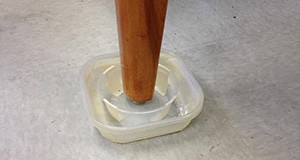
Many types of traps can be used to monitor or control insect pests. Traps to capture insects vary greatly, depending on the target, location, and purpose. Traps may be inexpensive and disposable, or more complex. This 12-page fact sheet describes several traps for common pests in the home, garden, and landscape that can be made using common household materials or that are readily available in stores. Written by Steven Arthurs and Adrian Hunsberger and published by the Entomology and Nematology Department.
http://edis.ifas.ufl.edu/in1103
Category: Families & Consumers
El Zika, un Virus Transmitido por Mosquitos
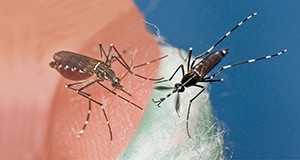
Zika es un virus transmitido por mosquitos que se ha esparcido recientemente en regiones tropicales y ha causado epidemias, especialmente durante los últimos 8 o 9 años. En su ámbito nativo en África Occidental y Uganda, el virus se mantiene en los bosques, circulando entre mosquitos que viven en huecos de árboles y primates arbóreos; las infecciones de humanos se consideran incidentales y de poca importancia médica. Una cepa del virus que se implicó en brotes en Polinesia Francesa emergió en el Norte de Brasil en el 2015 y causó gran consternación debido a la alta incidencia de microcefalia en bebes nacidos de madres que fueron infectadas con el virus durante la gestación. Transmisión local, principalmente por el mosquito de la fiebre amarilla Aedes aegypti, ha sido documentada en la mayoría de los países tropicales de las Américas, pero aún no se ha detectado en Los Estados Unidos Continentales. Los síntomas de la infección incluyen, salpullido, dolor de cabeza, fiebre, dolor muscular y en las coyunturas, conjuntivitis, y malestar general.
This 7-page fact sheet written by J. R. Rey, L. P. Lounibos, B. W. Alto, N. D. Burkett-Cadena, C. C. Lord, C. T. Smartt, and C. R. Connelly and published by the Department of Entomology and Nematology is the Spanish language version of Zika, a Mosquito-Transmitted Virus and describes the Zika microbe, its mosquito hosts, and the disease it causes. A history of the virus and its migration are included, along with some details about the virus in the state of Florida and preventative measures people can take to avoid infection. The best way to avoid contracting Zika (and other mosquito-borne diseases) is not to get bitten in the first place. Take precautions to avoid mosquito bites.
http://edis.ifas.ufl.edu/in1121
Principles and Practices to Secure and Hold Interest

Securing and holding student interest is a major challenge for teachers. Once the curriculum is set, then teachers must decide how to teach the content, particularly how to build lasting interest in the content being taught. Students learn more and retain what they have learned longer when they are interested in the content, see its usefulness, and are motivated to learn and apply what they have learned. This three-page fact sheet discusses what makes a topic or lecture interesting for students and ways to improve teaching methods to keep students engaged and interested in the subject matter. Written by R. Kirby Barrick and Andrew C. Thoron, and published by the Agricultural Education and Communication Department.
http://edis.ifas.ufl.edu/wc242
Principles of Teaching and Learning

Effective teaching involves careful consideration and planning. There are several different principles that can be used to guide teachers in planning their lessons. This two-page fact sheet provides information on how to organize and structure subject matter, motivate students, effectively use reward and reinforcement, and other techniques for instruction. Written by R. Kirby Barrick and Andrew C. Thoron, and published by the Agricultural Education and Communication Department.
http://edis.ifas.ufl.edu/wc243
Teaching Behavior and Student Achievement

Student achievement can clearly be enhanced through effective teaching behaviors, but what kinds of teacher behaviors lead to higher achievement among learners? This six-page fact sheet describes five different teacher behaviors that can lead to higher student achievement. These behaviors are clarity, variability, Enthusiasm, task oriented and/or businesslike behavior, and student opportunity to learn criterion material. Written by R. Kirby Barrick and Andrew C. Thoron, and published by the Agricultural Education and Communication Department.
http://edis.ifas.ufl.edu/wc244
Pureed Foods: Texture Testing with the Slump Test

For individuals with dysphagia, the texture of puréed foods is extremely important. If the puréed foods are either too thick or too thin, it can make it more difficult to swallow. The slump test is a quick, easy, and inexpensive way to assess the texture of foods. This four-page fact sheet describes the slump test, how to perform a slump test, and how the slump test can be used to evaluate the texture of puréed foods. Written by Wendy J. Dahl, and published by the Food Science and Human Nutrition Department.
http://edis.ifas.ufl.edu/fs276
Teaching Students with Disabilities: Autism Spectrum Disorder and Asperger's Syndrome

Teachers of all subjects must familiarize themselves with the specific needs of the students in their classrooms, especially in the case of students with autism spectrum disorders (ASD) and Asperger’s syndrome because students may vary greatly in the degree to which they are affected by these disabilities. This four-page fact sheet explains the differences between autism and Asperger’s syndrome and how instructors can modify their lessons to effectively meet the needs of learners with these disabilities in different types of learning environments and achieve greater classroom success for the educator and the learner. Written by Sara E. LaRose and Andrew C. Thoron, and published by the Agricultural Education and Communication Department.
http://edis.ifas.ufl.edu/wc240
Healthy Living: Reliable Websites
 The number of resources available online grows every day. Unfortunately, there are no regulations to ensure that the information on these websites is accurate. Older adults can readily access reliable information on the Internet by focusing on government and education sites. This 2-page fact sheet is a major revision that provides a list of trustworthy Internet sources related to nutrition, health, food safety, and general interest for older adults. Written by Linda B. Bobroff and Leigh Ann Martin, and published by the UF Department of Family, Youth and Community Sciences, revised January 2016.
The number of resources available online grows every day. Unfortunately, there are no regulations to ensure that the information on these websites is accurate. Older adults can readily access reliable information on the Internet by focusing on government and education sites. This 2-page fact sheet is a major revision that provides a list of trustworthy Internet sources related to nutrition, health, food safety, and general interest for older adults. Written by Linda B. Bobroff and Leigh Ann Martin, and published by the UF Department of Family, Youth and Community Sciences, revised January 2016.
http://edis.ifas.ufl.edu/fy102
De Compras Para la Salud: Mariscos
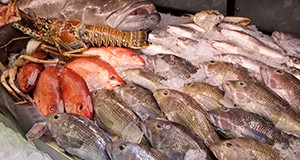
El marisco es un término general para todo tip de pescados y mariscos (USDA 2010). Los mariscos son parte del “grupo de alimentos de proteína” de MyPlate y también proporciona otros nutrientes necesarios para una buena salud (USDA 2011). Como hay muchos beneficios para la salud associados con la inclusión de los mariscos en la dieta, se recomienda que los adultos consuman al menos ocho onzas de una variedad de mariscos cada semana. Mientras que comer más mariscos se recomienda como parte de una dieta saludable, es importante tener en cuenta su presupuesto al hacer compras de mariscos. Este artículo explica los beneficios para la salud de los mariscos y ofrece algunas estrategias para ahorrar dinero para hacer los mariscos más asequible. This four page fact sheet is the Spanish language version of http://edis.ifas.ufl.edu/fs247, written by Michelle Brown and Wendy J. Dahl, and published by the Food Science and Human Nutrition Department.
http://edis.ifas.ufl.edu/fs275
School Garden: Plastic Wading Pool Hydroponics
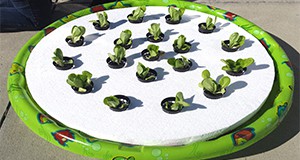 School gardens are a great way to get youth interested in where their food comes from. Hydroponics, or the cultivation of plants in liquid nutrient solutions rather than in soil, is a fascinating way to teach students about food systems. This 4-page fact sheet lists the materials, tools, and construction steps needed to grow a variety of crops in a wading pool hydroponic garden. Written by Edmund L. Thralls, and published by the UF Department of Environmental Horticulture, October 2015.
School gardens are a great way to get youth interested in where their food comes from. Hydroponics, or the cultivation of plants in liquid nutrient solutions rather than in soil, is a fascinating way to teach students about food systems. This 4-page fact sheet lists the materials, tools, and construction steps needed to grow a variety of crops in a wading pool hydroponic garden. Written by Edmund L. Thralls, and published by the UF Department of Environmental Horticulture, October 2015.
http://edis.ifas.ufl.edu/ep525
Preventing Foodborne Illness: Typhoid Fever: Salmonella Typhi
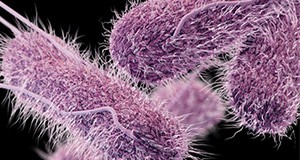
Typhoid fever is a blood infection caused by the consumption of food or water contaminated with the bacterium Salmonella enterica.Typhoid fever is easily controlled and relatively uncommon in the United States, but an estimated 21.5 million people per year are affected by typhoid fever in developing nations including regions in Asia, Africa, and South America. Many of the cases of typhoid fever in the United States are acquired through international travel to these regions. This four-page fact sheet explains the causes and symptoms of typhoid fever, as well as describing who is at risk, what foods have commonly been associated with typhoid fever, and how to implement certain sanitation methods to prevent the spread of typhoid fever. Written by Keith R. Schneider, Renée Goodrich Schneider, and Rachael Silverberg, and published by the Food Science and Human Nutrition Department.
http://edis.ifas.ufl.edu/fs125
Preventing Foodborne Illness: Campylobacteriosis
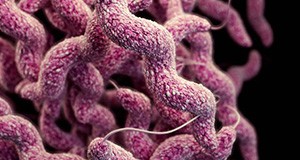
Campylobacteriosis is a gastrointestinal infection caused by bacteria of the genus Campylobacter. These bacteria require low levels of oxygen to survive and have been found in wild birds, poultry, pigs, cattle, domesticated animals, unpasteurized milk, produce, and contaminated water. A part of a series on preventing foodborne illness, this five-page fact sheet describes the Campylobacter bacteria, the causes and symptoms of campylobacteriosis disease, and how to prevent the disease through good sanitation methods and practices for receiving, handling, processing, and storing food products. Written by Soohyoun Ahn, Renée M. Goodrich-Schneider, Rachael Silverberg, and Keith R. Schneider, and published by the Food Science and Human Nutrition Department.
http://edis.ifas.ufl.edu/fs098
Chronic Kidney Disease: Phosphorus and Your Diet
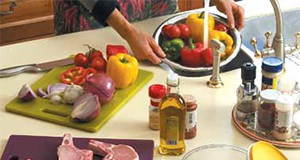
Phosphorous is an essential mineral necessary for the formation of bones and teeth, but also for kidney function and the regulation of muscle contractions, heartbeat, and nerve transmission. High blood levels of phosphorus may lead to adverse effects on bone, kidney, and heart health. When there is too much phosphorus in the blood, the body reacts by leaching calcium from the bones. This can be especially dangerous for those with Chronic Kidney Disease. This four-page fact sheet discusses the relationship between Chronic Kidney Disease and Phosphorous intake, examining foods that are high in phosphorous and ways to manage phosphorous levels. Written by Nancy J. Gal, Lauren Headrick, Kate Bennett, and Wendy J. Dahl, and published by the Food Science and Human Nutrition Department.
http://edis.ifas.ufl.edu/fs273
The Cost of Food Safety
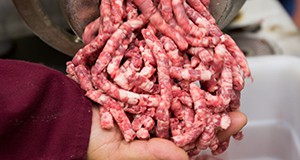 This new publication discusses the costs and long-term benefits associated with the implementation of food safety programs. This 5-page fact sheet covers the history of HACCP, costs associated with the application of food safety programs, reasons to improve food safety, and the financial impact of foodborne illnesses. Written by Annelys Hessing, Renée Goodrich Schneider, Alan Gutierrez, Rachael Silverberg, Michael S. Gutter, and Keith R. Schneider, and published by the UF Department of Food Science and Human Nutrition, October 2015.
This new publication discusses the costs and long-term benefits associated with the implementation of food safety programs. This 5-page fact sheet covers the history of HACCP, costs associated with the application of food safety programs, reasons to improve food safety, and the financial impact of foodborne illnesses. Written by Annelys Hessing, Renée Goodrich Schneider, Alan Gutierrez, Rachael Silverberg, Michael S. Gutter, and Keith R. Schneider, and published by the UF Department of Food Science and Human Nutrition, October 2015.
http://edis.ifas.ufl.edu/fs270
Shopping for Health: Breakfast Cereals
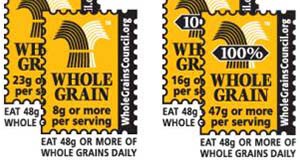
It is no secret that breakfast is an important meal. Eating breakfast provides you with physical and mental energy to start the day, along with vitamins and minerals. Cereal is a quick, versatile, and budget-friendly breakfast choice. The benefits of eating a healthy cereal include increased fiber intake and lower body weight. But navigating the cereal aisle at your local grocery store can be an overwhelming experience. Continue reading this three-page fact sheet to learn more about cereal and how to find your new go-to breakfast choices. Written by Jenna Sechar and Wendy J. Dahl, and published by the Food Science and Human Nutrition Department.
http://edis.ifas.ufl.edu/fs274
Sizzle and Passionista: Two New Lance-Leaved Caladium Cultivars
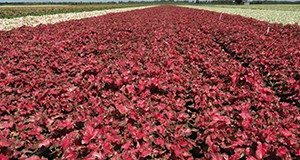 Many lance-leaved cultivars often produce small tubers, making it difficult for growers to produce tubers profitably. ‘Sizzle’ and ‘Passionista’ are two new lance-leaved caladium cultivars with improved tuber yield potential. The availability of ‘Sizzle’ and ‘Passionista’ may expand the color palette for caladium plants desired by greenhouse growers, nurseries, and gardeners. This 7-page fact sheet discusses the cultivars' tuber yield potential, container trials, landscape performance, growing recommendations, and availability. Written by Zhanao Deng, and published by the UF Department of Environmental Horticulture, December 2015.
Many lance-leaved cultivars often produce small tubers, making it difficult for growers to produce tubers profitably. ‘Sizzle’ and ‘Passionista’ are two new lance-leaved caladium cultivars with improved tuber yield potential. The availability of ‘Sizzle’ and ‘Passionista’ may expand the color palette for caladium plants desired by greenhouse growers, nurseries, and gardeners. This 7-page fact sheet discusses the cultivars' tuber yield potential, container trials, landscape performance, growing recommendations, and availability. Written by Zhanao Deng, and published by the UF Department of Environmental Horticulture, December 2015.
http://edis.ifas.ufl.edu/ep527
Food Safety within the Household: Risk Reduction

Food poisoning is common in the United States. The CDC estimates that 48 million Americans acquire foodborne illness every year, many of which were attributed to food preparation occurring in private homes. In 2013, the top five identified bacterial and viral causes of food poisoning attributed to home food preparation were Salmonella, norovirus, shiga-toxin-producing Escherichia coli, Clostridium perfringens, and Campylobacter. This six page fact sheet outlines the most common food-safety handling mistakes, which are improper food storage, inadequate cooking or reheating temperatures, cross-contamination, and infected food handlers. Written by Lucianna Grasso, Rachael Silverberg, George L. Baker, Renée M. Goodrich-Schneider, and Keith R. Schneider, and published by the Food Science and Human Nutrition Department.
http://edis.ifas.ufl.edu/fs195
Contaminants in the Urban Environment: Microplastics
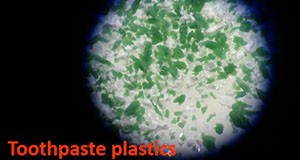
Plastic, plastic everywhere! We live in a world where we are surrounded by plastic: from packaging materials and cutlery to plastic appliances and medical devices. Since the mid-twentieth century, plastic has been a boon to humanity and an integral part of our modern lives. However, plastic debris is a major concern due to its abundance and persistence in the environment. Plastic contaminants not only include plastic debris characterized by large size but also small pieces of plastic in the millimeter size range; these inconspicuous “microplastics” have become a major concern because of their widespread presence in different environments and diverse organisms. This six-page fact sheet discusses the sources of microplastics, their effects on the environment, and ways to minimize microplastics pollution and exposure. Written by Yun-Ya Yang, Ignacio A. Rodriquez, Maia McGuire, and Gurpal S. Toor, and published by the Soil and Water Science Department.
http://edis.ifas.ufl.edu/ss649
Bitter Melon: An Asian Vegetable Emerging in Florida
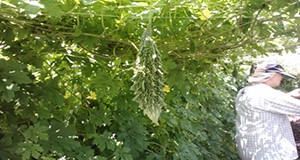 Bitter melon is a tropical and subtropical vegetable crop with long climbing vines which is widely cultivated in Asia, Africa, and the Caribbean. The unripe fruit is used as a vegetable with a pleasantly bitter taste. This 7-page fact sheet provides an overview of this plant as well as recommendations for individuals in Florida who are interested in growing it. Written by Guodong Liu, Qingren Wang, Yuncong Li, David Dinkins, Bonnie Wells, and Yuqi Cui, and published by the UF Department of Horticultural Sciences, December 2015.
Bitter melon is a tropical and subtropical vegetable crop with long climbing vines which is widely cultivated in Asia, Africa, and the Caribbean. The unripe fruit is used as a vegetable with a pleasantly bitter taste. This 7-page fact sheet provides an overview of this plant as well as recommendations for individuals in Florida who are interested in growing it. Written by Guodong Liu, Qingren Wang, Yuncong Li, David Dinkins, Bonnie Wells, and Yuqi Cui, and published by the UF Department of Horticultural Sciences, December 2015.
http://edis.ifas.ufl.edu/hs1271
Long Squash: An Asian Vegetable Emerging in Florida
 Long squash is an annual, vigorous, and herbaceous crop that was brought to the Americas by Paleoindian populations from Asia before the arrival of Columbus. This 4-page fact sheet provides an overview of this plant as well as recommendations for individuals in Florida who are interested in growing it. Written by Guodong Liu, Yuncong Li, David Dinkins, Bonnie Wells, Qingren Wang, and Yuqi Cui, and published by the UF Department of Horticultural Sciences, December 2015.
Long squash is an annual, vigorous, and herbaceous crop that was brought to the Americas by Paleoindian populations from Asia before the arrival of Columbus. This 4-page fact sheet provides an overview of this plant as well as recommendations for individuals in Florida who are interested in growing it. Written by Guodong Liu, Yuncong Li, David Dinkins, Bonnie Wells, Qingren Wang, and Yuqi Cui, and published by the UF Department of Horticultural Sciences, December 2015.
http://edis.ifas.ufl.edu/hs1272